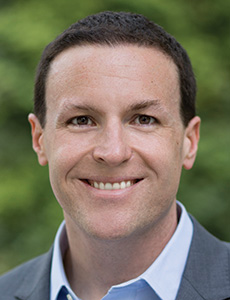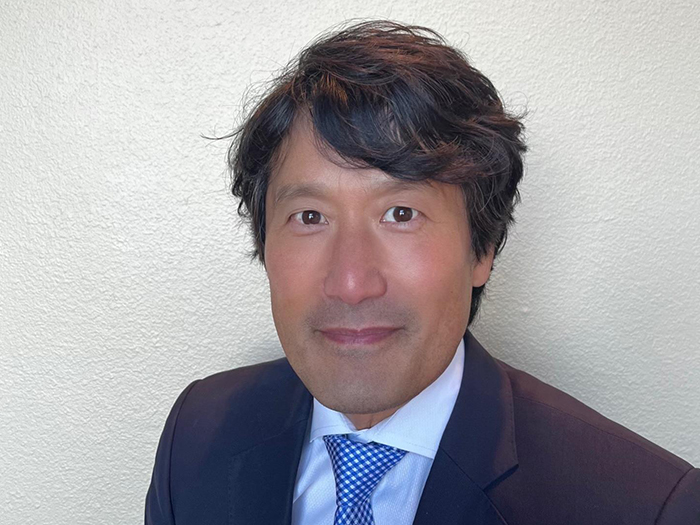Bridging the Insurance Talent Gap: How Technology Is Transforming Knowledge Transfer

It’s safe to say that the commercial insurance space has reached a critical juncture, in several manners. The Great Resignation, born from the pandemic, left no industry unscathed. As many opted for a career change or an early retirement, several seats at the table opened and remained empty.
Now, as the pandemic’s public health emergency looks at us from our rearview mirrors, the insurance industry is being hit with a silver tsunami. According to the United States Census Bureau, by the year 2030, all individuals considered to be in the “baby boomer” generation will be either age 65 or older. Another wave of retirements is heading the industry’s way, which will mean even more seats to fill.
“Undoubtedly, we are facing a workforce shift in the industry,” said Michael Combs, president, CorVel.
Additionally, technology is fostering its own tsunami. While there is never a shortage of technological advances, the recent surge of artificial intelligence capabilities has altered the playing field for how businesses can operate.
As the industry continues to incorporate the growing functionalities of technology into their everyday operations, these tools can also be used to ensure that the next and newest generation of industry talent is prepared to continue on, especially after their mentors retire.
How Relevant of a Risk Is the Talent Gap?
As mentioned previously, there have not been many sectors or industries that haven’t felt the sting of the talent shortage. This phenomenon is proving to be incredibly precarious, especially for insurance.
Jeff Duncan, EVP, and head of commercial lines, AmTrust Financial, noted that for his company, “roughly a third of the employee population is either at retirement age today or will be within the next five years.”
David Mulligan, chief operating officer for QBE North America, said those in the industry are acutely aware of what implications could stem from a talent shortage: “Everybody [understands] the reality of the baby boomer generation retiring, and young graduates don’t find insurance [to be] the trendiest career pick.”
The talent gap paints a sobering picture for the insurance industry: With decades-long careers ending or nearing their ends, that means decades of knowledge and information will be retiring with them. The objective isn’t just to recruit more talent, but it’s creating a productive knowledge transfer process between the industry veterans and the incoming hopefuls.
“As experienced claims professionals are retiring, we need to bring in newer professionals and simplify and streamline the process of getting them up-to-speed,” Combs said.
Streamlining that process can only be optimized with capabilities beyond the human touch or eye.
Technology to the Rescue
The examples of the various technologies and capabilities being utilized by industry professionals seem endless.
In the case of the talent shortage and the ever-present need for knowledge transfer, technology can insert itself at the boardroom table, riddled with empty seats, and fill the gaps that humans have left behind.
For one, artificial intelligence, when incorporated into industry or company processes, can serve as a reference point for new employees.
“It’s a means to mitigate labor challenges and provide guidelines for future generations of professionals,” Combs said. “When these technologies are embedded into risk management systems, they offer assistance and guidance to less-seasoned professionals.”
Automation is a crucial component of technological tools. While those in the industry recognize that technology cannot replace a human being, it can take on some of that human being’s workload.
“In cases of automation, there’s an opportunity to reduce the overall resource demand that an organization may have,” Mulligan said. “For example, we can’t fully automate the work of an underwriter, but we can put tools and capabilities in place that allow the underwriter to be much more productive.”
Duncan echoed similar sentiments: “On a foundational level, [companies] can use technology to make the talent gap smaller by empowering teams and enabling them to do more, even with lower staffing levels.” With automation, especially in terms of analytics and data, Duncan said that professionals can now focus more on the why behind the metrics, which is a valuable learning moment for recent, or new, hires.
“You can spend more time on why data may have changed [from month to month], meaning that more tenured staff can spend more time with junior staff, as opposed to having a sort of assembly line where junior staff are punching numbers into an Excel sheet all day,” he said.
This enables technology to take an indirect approach in the knowledge transfer process. With automation tools in place, industry veterans can not only utilize their time to focus on human-centric work but also focus on the knowledge transfer to newer personnel.
A Means for Recruitment
An interesting tactic that those in the industry have been using when it comes to technology tackles the issue, and the rippling effects, of the talent gap. In other words, some industry professionals say the utilization of technology in day-to-day tasks can be used as an enticement to attract the younger generations to a career in insurance.
By incorporating technology to conduct some of the repetitive, mundane tasks one may do, it can free up the employee to engage in some of the more meaningful work. For a younger generation that, collectively, are very mission and purpose driven, this could be very appealing.
For Mark Pew, founding partner of WorkCompCollege.com, a training platform for those in the workers’ compensation industry, using technology as a means of recruitment is essential for the industry.
“I’m thoroughly convinced at this point that this technology will not be focused on replacing people’s jobs but freeing up people to be human,” he said.
He continued, “It’s about giving all stakeholders access to information sooner and more completely, recognizing issues faster so they can be addressed timelier, and reducing and erasing mundane tasks that AI or robotic process automation or self-service apps can do instead.”
The Benefits and Risks
The presence and function of technology in the knowledge transfer process produces hordes of both benefit and risk. We’ll start with the benefits.
For Pew, the use of technology in knowledge transfer can be an optimal solution to address the frequency at which people are leaving the industry: “Historically, knowledge transfer happened when experienced people relayed that experience to the younger generation,” he said.
“Sudden resignations or retirements or deaths can cause a lot of institutional knowledge to vaporize quickly, and the promise of large learning models is to find all of the data corresponding to a particular question and summarize it in digestible terms so humans can take action on it.”
“Technology is certainly capable of driving productivity, so we see that as a way to mitigate the risk of a reduced shrinking pool,” Mulligan said. “When you think about applying technology to any insurance process, it will simplify and streamline that process, which will be much easier for any newcomer in an organization to learn.”
But of course, the strides that technologies like AI and machine learning make are not without risk.
Duncan noted that a major risk for AI use is the potential of bias and discrimination seeping its way through. Additionally, as AI machines are used on resumes for narrower specialties, “the risk of filtering out useful, analogous experience is tremendous.”
As mentioned before, technology can bridge the gap that humans may not be able to fill. While that can be beneficial, it’s also inadvertently a risk.
“If we rely solely on computers training humans, we could lose a lot of that gut instinct that only comes from being an experienced human,” Pew added. “So, mentoring and knowledge transfer between humans will always be an integral part of passing the torch.”
Combs agreed: “A balance must be struck between leveraging the system and using real-time human experience.”
The Future of Our Industry
Two realities are certain: The talent shortage and the technological boom are here to stay. What does this mean for the future of the industry?
As of right now, more than half of the professionals working in the industry are older than 50. Time is scarce to teach and transfer knowledge to the next, and limited, generation of industry workers. Technology will remain a key backbone when it comes to ensuring knowledge transfer is taking place at a productive rate, all while still achieving organizational tasks and goals.
And a human touch will still be integral to success.
“The most sophisticated players in AI and machine learning will invest as much in people to access these tools as they do in machine learning itself,” Duncan noted.
Looking ahead, Pew has several recommendations for how organizations can practice knowledge transfer with a technological approach.
“We need to continue to find areas that can be automated, find data that will help make decisions faster, provide real-time, 24/7 access to useful information,” he said.
“We need to codify institutional knowledge that can be passed from generation to generation but also be open to new ways of doing things,” he continued. “All of that will not only help in the knowledge transfer but also the talent gap issues.”
But amidst all the technology that is sure to have major developments in the next several years, reverting to foundational pillars can be just as effective.
“The best technology, in my mind, to help manage the knowledge and talent gap is 150-year-old technology: the telephone,” Duncan said. “Especially now, in our decentralized virtual working environment, [the phone] is still a fantastic way of transferring three, four decades of knowledge.”
Sometimes, it’s best not to overcomplicate matters. &











